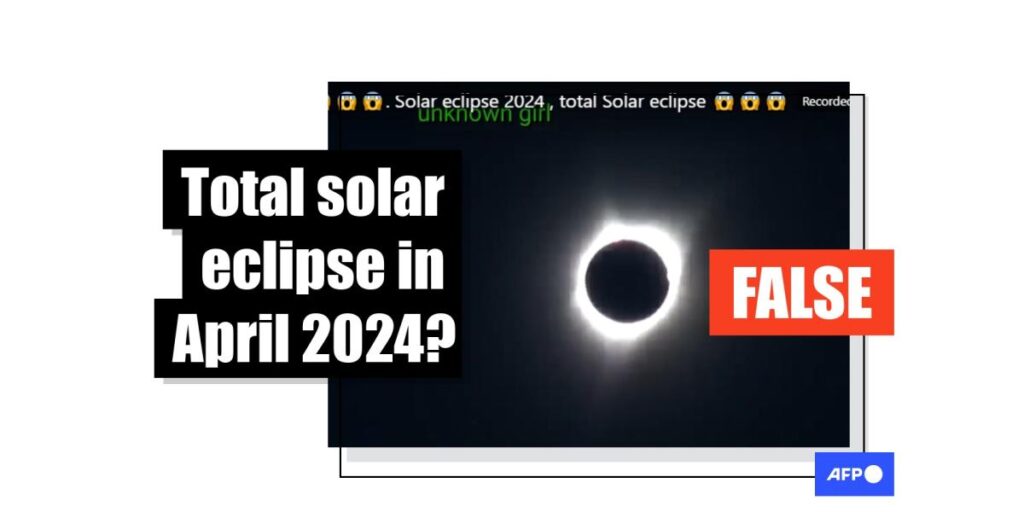As a rare total solar eclipse swept across North America in April 2024, social media was awash with old footage falsely shared as the celestial phenomenon. In one case, a Facebook video with hundreds of thousands of views in fact showed an eclipse seven years earlier in Madras, Oregon. That city did not experience the total solar eclipse in April 2024.
“Live solar eclipse 2024,” read a Facebook post that shared the video on April 8, 2024.
The clip, which racked up more than 445,000 views, shows day briefly turn to night as the the Moon fully blocks out the Sun.
Crowds can be heard whooping and cheering in the background.
The post surfaced as North Americans watched the Moon fully eclipse the Sun and briefly plunge parts of the continent into darkness.
The video was shared in similar posts here, here, here and here.
However, the video was filmed years before the eclipse.
2017 video
Reverse image searches on Google found the video posted on YouTube on August 22, 2017 by US-based tech site GeekWire (archived link).
The video is titled: “Relive the entire total phase of the Aug. 21 solar eclipse, as captured by John E. Hoots in Madras, Ore”.
Below is a screenshot comparison between the video in the false posts (left) and the video uploaded by Geekwire (right):

On August 21, 2017, millions of sky-gazers stood to witness the “Great American Eclipse”, a total solar eclipse that swept the continent coast-to-coast for the first time in nearly a century.
The eclipse’s path of totality was a 70-mile (113-kilometre) wide swath cutting through 14 US states.
More than 100,000 people gathered in Madras, Oregon — typically a town of 7,000 — what experts described as perfect viewing conditions, AFP reported at the time.
The crowds heard whooping and cheering in the video shared on social media can be heard in GeekWire’s video, including people shouting “Look at those shadows!” and “It’s brightening on the one side!”
According to a GeekWire article, the footage was filmed at Jefferson County Fairgrounds by semi-retired scientist John E. Hoots, who captured the moment with a hand-held video camera (archived link).
“When totality was just about to begin, Hoots removed the solar filter and set the exposure to capture the delicate glow of the sun’s outer atmosphere, known as the corona,” it said.
Partial solar eclipse
Furthermore, the total solar eclipse on April 8, 2024 was not visible from Madras.
According to NASA’s eclipse map, the city only caught a glimpse of a partial eclipse that day (archived link).
Below is a screenshot of NASA’s map showing the path of totality of the 2024 total solar eclipse, with Madras pinpointed in red.

According to NASA’s website, a partial solar eclipse is “when the Moon passes between the Sun and Earth but the Sun, Moon, and Earth are not perfectly lined up”, leading into only a part of the Sun being covered and giving it a crescent shape (archived link).
While the path of totality in April 2024 did not cover the state of Oregon, NASA said that every contiguous US state — plus parts of Alaska and Hawaii — was set to experience at least a partial solar eclipse (archived link).
AFP has fact-checked more misinformation about the solar eclipse here, here and here.



